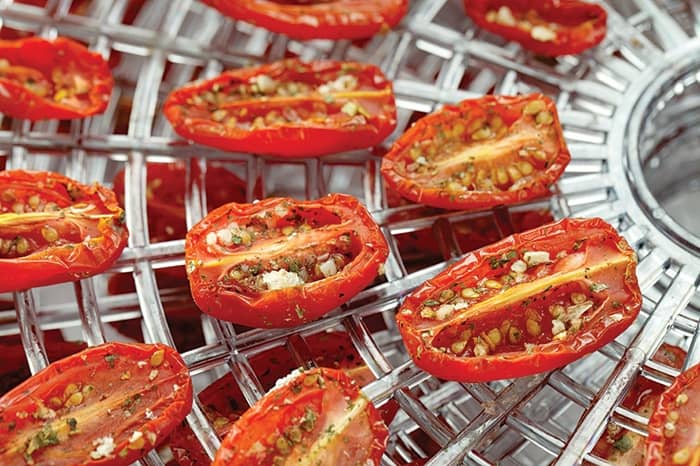
For centuries, before modern conveniences like refrigeration, many cultures used the sun and air to dehydrate foods as a way to preserve the bounties of hunts and harvests. The dehydration process took days and was not always sanitary. Today, however, dehydrating food can be easy and safe.
Fueled by the popularity of raw-food diets and increased interest in gardening and farmers markets, dehydrated food — from kale chips to beef jerky — is making a comeback. The most foolproof method uses dehydrators, which come in a range of sizes to fit the needs of home cooks and professional chefs alike. Most come with stackable trays so layers of foods can be dried at the same time. Dehydrating food can take anywhere from four to 12 hours, so plan ahead.
You can also dehydrate food in a conventional oven using a fan, a few stainless steel mesh racks and an oven thermometer. Most drying recipes call for a very low oven temperature, usually around 140 degrees Fahrenheit. Prop open the oven door to allow moist air to escape. Place a fan in front of the oven door to circulate air around the food. (Keep children and pets away from the open oven door.)
Foods generally dehydrate a little faster using this method; however, many ovens are not big enough to make large quantities of dried food. This may mean preparing multiple batches and leaving the oven on for hours at a time, making this method less efficient than a food dehydrator.
4 Tips for Dehydrating Food
- Make sure food is uniform in size so each piece dries at the same rate, making a consistent product. A mandoline or food processor helps cut fruit and vegetables into uniform pieces.
- Don't crowd the pa n. Leave extra space between food pieces to allow air to circulate.
- Before dehydrating, soak fruits and vegetables that tend to brown, like apples and bananas, in a bath of water and lemon juice.
- When ma king fruit leathers, be sure to taste the base. Maybe those strawberries need a kick of agave nectar, or perhaps that peach batch would taste great with a little vanilla extract. Experiment and have fun.





